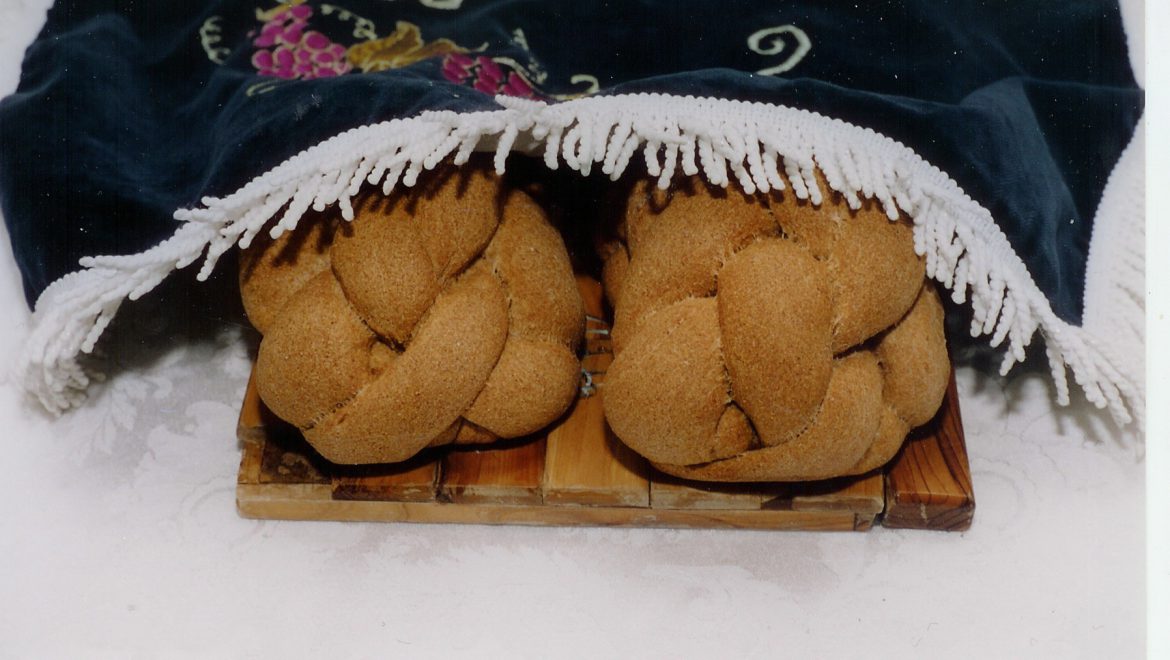
This article from Chabad.org provides biblical, Talmudic and halachic reasons for the custom of covering the challah before and during the HaMotzi blessing. In practice, the Shabbat challah is covered from the beginning of the Kiddush (blessing over the wine) until immediately before (or after – customs vary) the blessing over the bread, in which the challot are uncovered and cut. This article is particularly helpful for those looking to understand more about the various customs surrounding Bircat HaMotzi. Rabbi Menachem Posner is a teacher, educator, staff writer at Chabad.org and contributor to several online Jewish newspapers.
Why Do We Cover the Challah Bread on the Shabbat Table?
There are a number of reasons for this tradition.
1. When our ancestors traveled in the desert for forty years, they subsisted on the manna that miraculously fell from heaven every day. The challah we eat on Shabbat is actually in place of that manna. Since the manna was encased between layers of dew that preserved its freshness, we envelop the challahs between the tablecloth (or cutting board) and the challah cover, reliving the manna miracle at our Shabbat meal.
(Actually, on Shabbat the manna did not fall. Rather, a double portion fell on Friday—one portion for that day, and another for the day of rest that followed. That is why we place two challahs on the Shabbat table, to commemorate this double portion that fell on Friday in honor of the Shabbat.)
2. In Talmudic times, before tables and chairs, banquet participants were served their meal on three-legged trays, which were brought to them by the waiters. On Shabbat, these table-trays would be brought out only after kiddush, in order to demonstrate that the meal is being served in honor of the Shabbat, which had just been sanctified during the recitation of kiddush. Today, we don’t carry small tables in and out. Instead, we set the table with the challah, but cover it until the time when it would have been carried in. This delivers the message that the meal only begins after, and because of, kiddush.
3. Not only do different types of food require different blessings, but there is actually a hierarchy that regulates the order in which we recite blessings and eat various foods.
Generally, the seven foods with which the land of Israel is praised—wheat, barley, grapes, figs, pomegranates, olives and dates—take priority over other foods. In the event that one is eating two or more of these foods, they are eaten in the order that they are mentioned in the Torah. Since grain is mentioned before grapes, it would follow that the bread should be eaten before the wine.
We therefore cover the bread (“wheat”) in order that it not be “shamed” by the fact that we drink the kiddush wine (“grapes”) before we partake of the challah.

